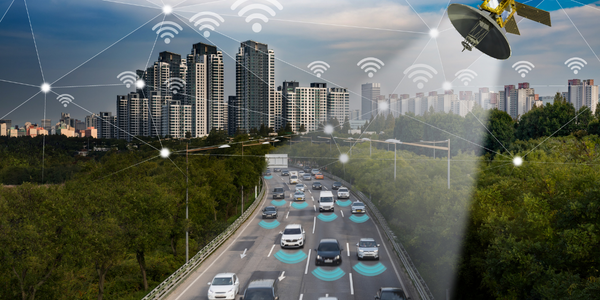Vehicle Telematics

Vehicle Telematics enables the monitoring of location, movement, status, and behavior of a vehicle within a fleet. This is achieved through a combination of a GPS receiver and an electronic GSM device that is installed in each vehicle, which then communicates with the user and cloud-based software. Additional sensors and Actuators may be added to the system to enable additional functionality, such as vehicle remote control and driver status Tracking. Telematics systems provide analytics to determine the optimal route based on location and traffic information, the vehicle's condition, and operational cost prediction.
- Automotive
- Transportation
- Logistics & Warehousing
The global market for telematics is predicted to grow from USD 20.0 billion in 2015 to USD 49.12 billion in 2020. IoT technologies enable more robust telematics systems than were previously possible.
Source: Allied Market Research
What is the business value of Vehicle Telematics?
A telematics solution provides the status of vehicles in a fleet. Businesses use telematics systems to monitor when a vehicle starts, shuts down or idles, as well as location and speed. This information can provide a complete, near real-time understanding of fleet activities in one centralized, cloud-based interface. The expected benefits of a telematics solution include increased productivity, more accurate fleet routing, reduced labor and fuel costs, improved delivery visibility and customer service, and control over unauthorized vehicle use.
Typical system performance factors include location accuracy, optimization of fuel consumption, high uptime, and reliable connectivity, which is the foundation for all data-driven value creation.
Fleet Managers: Fleet managers are key stakeholders in vehicle telematics implementations, responsible for overseeing the deployment and utilization of telematics solutions within their fleets. They rely on telematics data to optimize fleet operations, improve safety, and ensure compliance with regulations.
Drivers: Drivers play a crucial role in vehicle telematics by interacting with telematics devices and systems during their daily operations. They benefit from telematics solutions through improved communication, route optimization, and access to real-time feedback on driving behavior and performance.
Maintenance Technicians: Maintenance technicians utilize telematics data to proactively monitor vehicle health and schedule maintenance tasks. By analyzing telematics data for signs of mechanical issues or maintenance needs, technicians can perform timely repairs and preventive maintenance to keep vehicles in optimal condition.
Wireless Connectivity: Vehicle telematics rely on wireless connectivity, such as cellular networks or satellite communication, to transmit data between vehicles and backend systems. Wireless connectivity ensures real-time data access and remote monitoring capabilities for fleet managers.
Cloud Computing: Telematics data is processed and stored in cloud-based platforms, providing scalability, flexibility, and accessibility for fleet management operations. Cloud computing enables real-time data analytics, remote monitoring, and seamless integration with other business systems.
How is data acquired in a Vehicle Telematics system?
Traditionally telematics has relied heavily on GPS. Today, a wider range of sensors and transceivers can be used to track a vehicle's location and operational status at a more granular level. Important data points include location coordinates, motion patterns, and vehicle condition data. These data can be transmitted via the Internet or, if Internet access is either prohibitively expensive or unavailable when the vehicle docks at a station with WiFi or other localized connectivity. Real-time data is required for many of the most valuable functions of the telematics system, such as the ability to calculate the best route under changing conditions.
What are the main challenges in deploying or installing a Vehicle Telematics system?
Integrating satellite-based technologies into your business can present a host of issues, ranging from failures caused by improper hardware installation to inadequate training of the workforce in the new technology. Integration issues can also arise when harmonizing business operations and contract documents with the new system.
The use of GPS/satellite technology raises regulatory issues. Several countries, such as China, impose special taxes or restrictions on GPS equipment in addition to the usual import tariffs required by other types of electronic equipment. The use of local technologies or databases may be required or encouraged.
There are emerging regulatory and legal issues at stake for businesses as tracking of driver status becomes technically feasible. There is obvious value in identifying if a driver is tired or may be intoxicated. However, the legal boundaries around the tracking of employee data remain unclear. Many companies are not willing to disclose their data through a completely liberal GPS tracking approach in fear of data breach and/or personal privacy of the drivers. This restraint, while understandable, can limit the value of the data.
The are no major challenges during system installation. However, large fleets may require a significant investment in order to ensure seamless real-time data transfer. This is particularly true if IoT sensors are installed on vehicles that are already in operation.
Case Studies.







